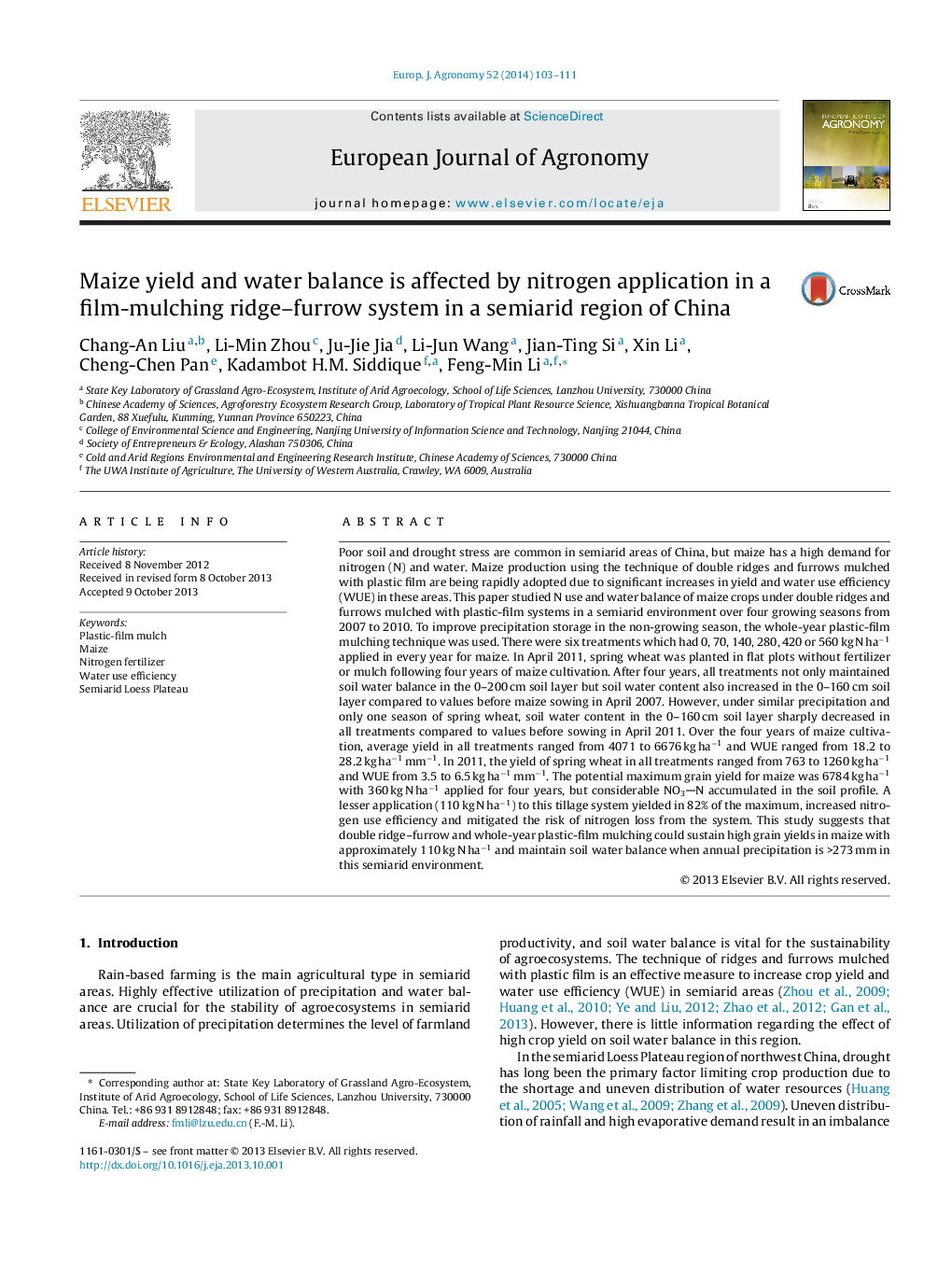| کد مقاله | کد نشریه | سال انتشار | مقاله انگلیسی | نسخه تمام متن |
|---|---|---|---|---|
| 4509014 | 1624473 | 2014 | 9 صفحه PDF | دانلود رایگان |
• N use and water balance of maize under film mulched ridges-furrow system were studied.
• This technique can maintain soil water balance when annual precipitation is >273 mm.
• Application of 110 kg N ha−1 could get high yields and mitigated the risk of N loss.
• NO3-N mainly accumulates in the 0–160-cm soil layer.
Poor soil and drought stress are common in semiarid areas of China, but maize has a high demand for nitrogen (N) and water. Maize production using the technique of double ridges and furrows mulched with plastic film are being rapidly adopted due to significant increases in yield and water use efficiency (WUE) in these areas. This paper studied N use and water balance of maize crops under double ridges and furrows mulched with plastic-film systems in a semiarid environment over four growing seasons from 2007 to 2010. To improve precipitation storage in the non-growing season, the whole-year plastic-film mulching technique was used. There were six treatments which had 0, 70, 140, 280, 420 or 560 kg N ha−1 applied in every year for maize. In April 2011, spring wheat was planted in flat plots without fertilizer or mulch following four years of maize cultivation. After four years, all treatments not only maintained soil water balance in the 0–200 cm soil layer but soil water content also increased in the 0–160 cm soil layer compared to values before maize sowing in April 2007. However, under similar precipitation and only one season of spring wheat, soil water content in the 0–160 cm soil layer sharply decreased in all treatments compared to values before sowing in April 2011. Over the four years of maize cultivation, average yield in all treatments ranged from 4071 to 6676 kg ha−1 and WUE ranged from 18.2 to 28.2 kg ha−1 mm−1. In 2011, the yield of spring wheat in all treatments ranged from 763 to 1260 kg ha−1 and WUE from 3.5 to 6.5 kg ha−1 mm−1. The potential maximum grain yield for maize was 6784 kg ha−1 with 360 kg N ha−1 applied for four years, but considerable NO3N accumulated in the soil profile. A lesser application (110 kg N ha−1) to this tillage system yielded in 82% of the maximum, increased nitrogen use efficiency and mitigated the risk of nitrogen loss from the system. This study suggests that double ridge–furrow and whole-year plastic-film mulching could sustain high grain yields in maize with approximately 110 kg N ha−1 and maintain soil water balance when annual precipitation is >273 mm in this semiarid environment.
Journal: European Journal of Agronomy - Volume 52, Part B, January 2014, Pages 103–111
